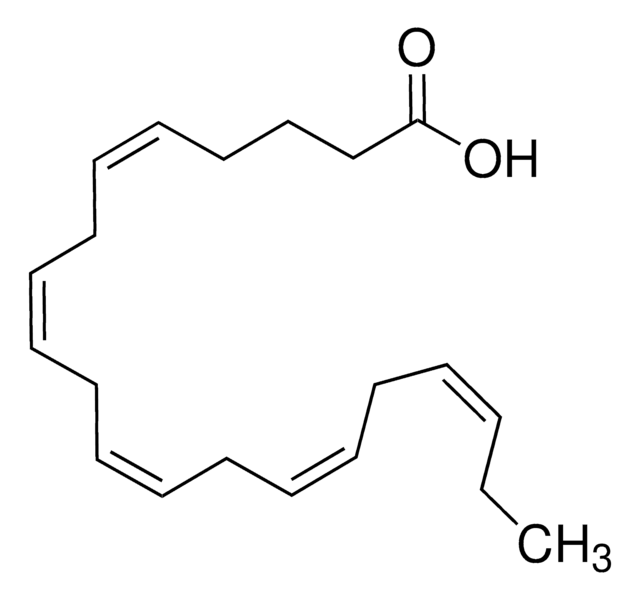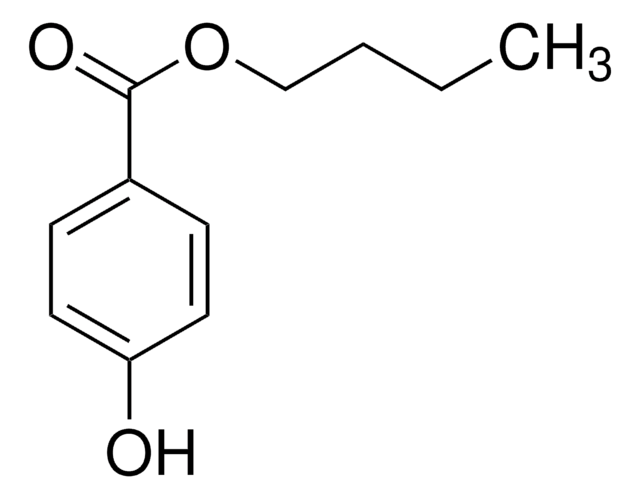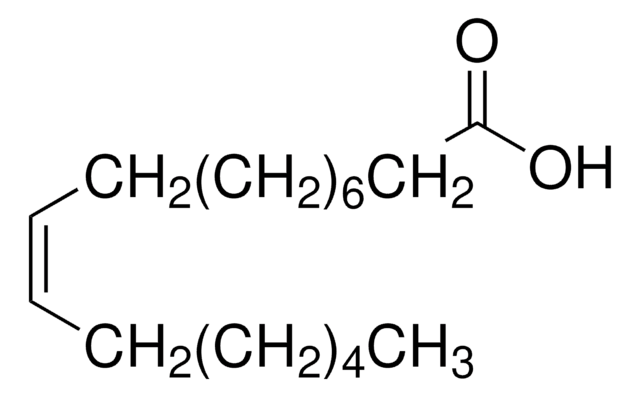SML0503
9(S)-HODE
≥98% (HPLC)
Sinonimo/i:
9S-Hydroxy-10E,12Z-octadecadienoic acid
About This Item
Prodotti consigliati
Livello qualitativo
Saggio
≥98% (HPLC)
Stato
solution
Concentrazione
1 mg/mL in ethanol
Colore
colorless to light yellow
Condizioni di spedizione
wet ice
Temperatura di conservazione
−20°C
Stringa SMILE
CCCCC/C=C\C=C\[C@@H](O)CCCCCCCC(O)=O
InChI
1S/C18H32O3/c1-2-3-4-5-6-8-11-14-17(19)15-12-9-7-10-13-16-18(20)21/h6,8,11,14,17,19H,2-5,7,9-10,12-13,15-16H2,1H3,(H,20,21)/b8-6-,14-11+/t17-/m1/s1
NPDSHTNEKLQQIJ-UINYOVNOSA-N
Azioni biochim/fisiol
Avvertenze
Danger
Indicazioni di pericolo
Consigli di prudenza
Classi di pericolo
Eye Irrit. 2 - Flam. Liq. 2
Codice della classe di stoccaggio
3 - Flammable liquids
Classe di pericolosità dell'acqua (WGK)
WGK 1
Punto d’infiammabilità (°F)
57.2 °F - closed cup
Punto d’infiammabilità (°C)
14.0 °C - closed cup
Scegli una delle versioni più recenti:
Certificati d'analisi (COA)
Non trovi la versione di tuo interesse?
Se hai bisogno di una versione specifica, puoi cercare il certificato tramite il numero di lotto.
Possiedi già questo prodotto?
I documenti relativi ai prodotti acquistati recentemente sono disponibili nell’Archivio dei documenti.
Il team dei nostri ricercatori vanta grande esperienza in tutte le aree della ricerca quali Life Science, scienza dei materiali, sintesi chimica, cromatografia, discipline analitiche, ecc..
Contatta l'Assistenza Tecnica.








